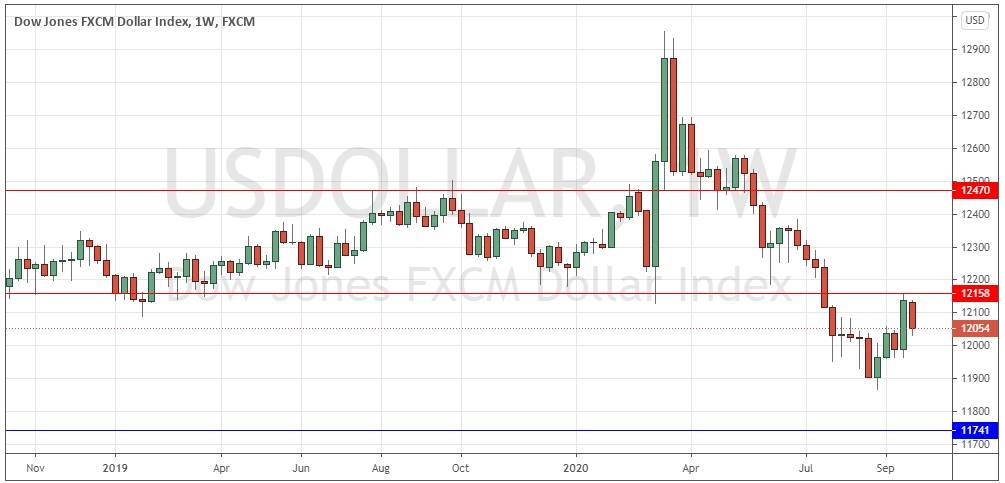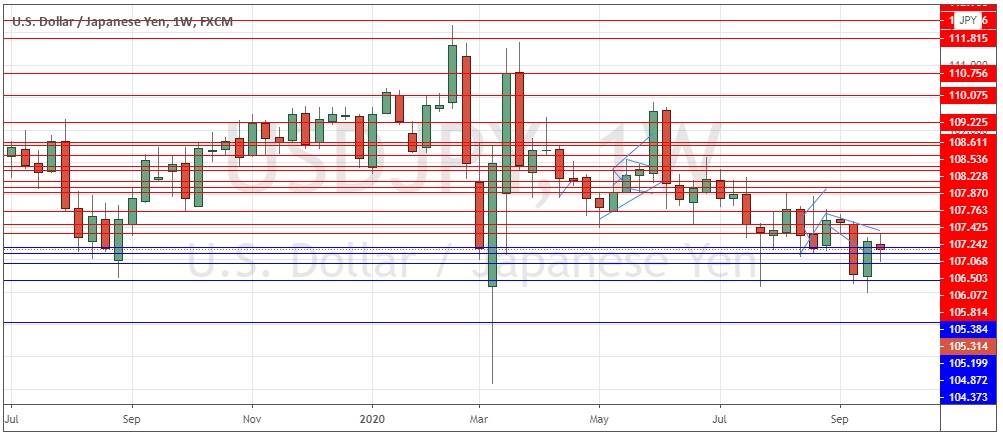The difference between success and failure in Forex trading is very likely to depend mostly upon which currency pairs you choose to trade each week and in which direction, and not on the exact trading methods you might use to determine trade entries and exits. The current market environment is still one of crisis, with a questionable rebound as global stock market indices recovered to reach new all-time highs before correcting, despite the continuing spread of the coronavirus pandemic which is still sweeping the world. There is also new drama surrounding the U.S. Presidential Election of 2020 now that President Trump has been admitted to hospital after being diagnosed positive for the coronavirus, although the news did not greatly affect markets last Friday.
Big Picture 4th October 2020
In my piece last week, I saw the most attractive trade opportunities as likely to be short-term short trades in the EUR/USD currency pair, and a long trade in the S&P 500 Index if Monday closed higher than the previous Friday. This was not a great call as the S&P 500 Index ended the week slightly down by 0.10% from Monday’s close, while the EUR/USD currency pair rose over the week by 0.74%.
Last week’s Forex market saw the strongest rise in the relative value of the Australian Dollar and the strongest fall in the relative value of the U.S. Dollar.
Fundamental Analysis & Market Sentiment
The focus now of stock market analysts in the U.S. is centered partially on President Trump’s coronavirus diagnosis and how his recovery proceeds over the coming days, and progress towards a deal between House Democrats and the Trump administration on a further round of economic stimulus which is widely seen as necessary to reignite economic recovery from the coronavirus shock earlier in the year.
Markets on Friday appeared relatively unworried by President Trump’s illness despite the fact that the President is in a relatively high-risk group due to his age and weight, and that there are only about 30 days left until the Presidential election in which President Trump is on the ballot for re-election. This may be due partially to the fact that the President does not seem in great danger so far, although he has only been sick for a few days.
Betting markets are increasingly predicting a more comfortable Biden victory and markets seem quite comfortable with that, probably because Biden is seen as a centrist and because a Democrat clean sweep would make a stimulus package likely to happen quickly and in good size.
Another issue in focus was last Friday’s U.S. non-farm payrolls data, which was disappointing as fewer jobs were created than the consensus forecast had been expecting.
The U.S. stock market has continued to recover slightly after correcting from its recent all-time high. Most analysts see the correction as nothing out of the ordinary as stock markets had been making a parabolic rise for some time.
Another major issue now is progress being made in a number of channels towards a safe and effective coronavirus vaccine.
Last week also saw a continuing breakdown in the prospect of a trade agreement between the E.U. and the U.K. as the period of the interim agreement runs down. If the U.K. were to finalize its exit from the E.U. without a trade deal, this would be very negative for the British Pound.
We have seen the number of new confirmed cases reported daily globally in the global coronavirus pandemic remain relatively high. Globally, coronavirus deaths are still lower than they were during their peak in early April, suggesting the virus may have become less lethal, or medical systems have effectively improved their treatment capacities. However, a worrying development has come in the form of a strong rise in new daily cases within the European Union over recent weeks, not to mention the enormous number of new confirmed cases that are being seen currently every day in India (currently running at approximately 80,000 per day).
Yesterday saw the highest daily coronavirus death toll in India, at just slightly less than 1,000 deaths.
Latin America is responsible for approximately 37% of confirmed new daily deaths, with India at 18%, the U.S.A. at 13%, and Europe (including the U.K.) also at about 13%. The strongest growth in new confirmed cases is happening in Albania, Andorra, Armenia, Austria, Belarus, Belgium, Burma, Canada, Costa Rica, Croatia, Czech Republic, Estonia, Finland, France, Georgia, Germany, Honduras, Hungary, Iran, Iraq, Ireland, Israel, Italy, Jordan, Latvia, Lebanon, Lithuania, Luxembourg, Malaysia, Moldova, Morocco, Nepal, Netherlands, Paraguay, Poland, Portugal, Romania, Slovakia, Slovenia, Spain, Sweden, Switzerland, U.A.E., Ukraine, and the United Kingdom.
The coming week is likely to bring a less active Forex market although we will be getting FOMC meeting minutes as well as central bank input from the RBA and the ECB to a lesser extent.
Technical Analysis
U.S. Dollar Index
The weekly price chart below shows the U.S. Dollar index printed a bearish inside candlestick after appearing to print new lower resistance at 12158. These are bearish signs, and there is a long-term bearish trend, as the price is lower than it was both 3 and 6 months ago. Overall, next week’s price movement in the U.S. Dollar looks likely to be downwards due to the prevalent trend and other bearish signs, although any political turmoil in the U.S. which might follow President Trump’s illness with coronavirus could cause risk-off flow which might tend to boost the U.S. Dollar.
USD/JPY
The USD/JPY currency pair is in a long-term downwards trend and fell slightly last week. The Dollar itself is in a downwards trend yet few currencies currently look strong against it. The bearish trend here is slow but persistent. A further fall over the coming week is more likely than not to happen. If we see renewed political turmoil in the U.S. and the raising of any constitutional questions, that will be likely to boost the Japanese Yen as a safe haven.
Bottom Line
I see the best likely opportunity in the Forex market this week in looking for short-term short trades in the USD/JPY currency pair.


